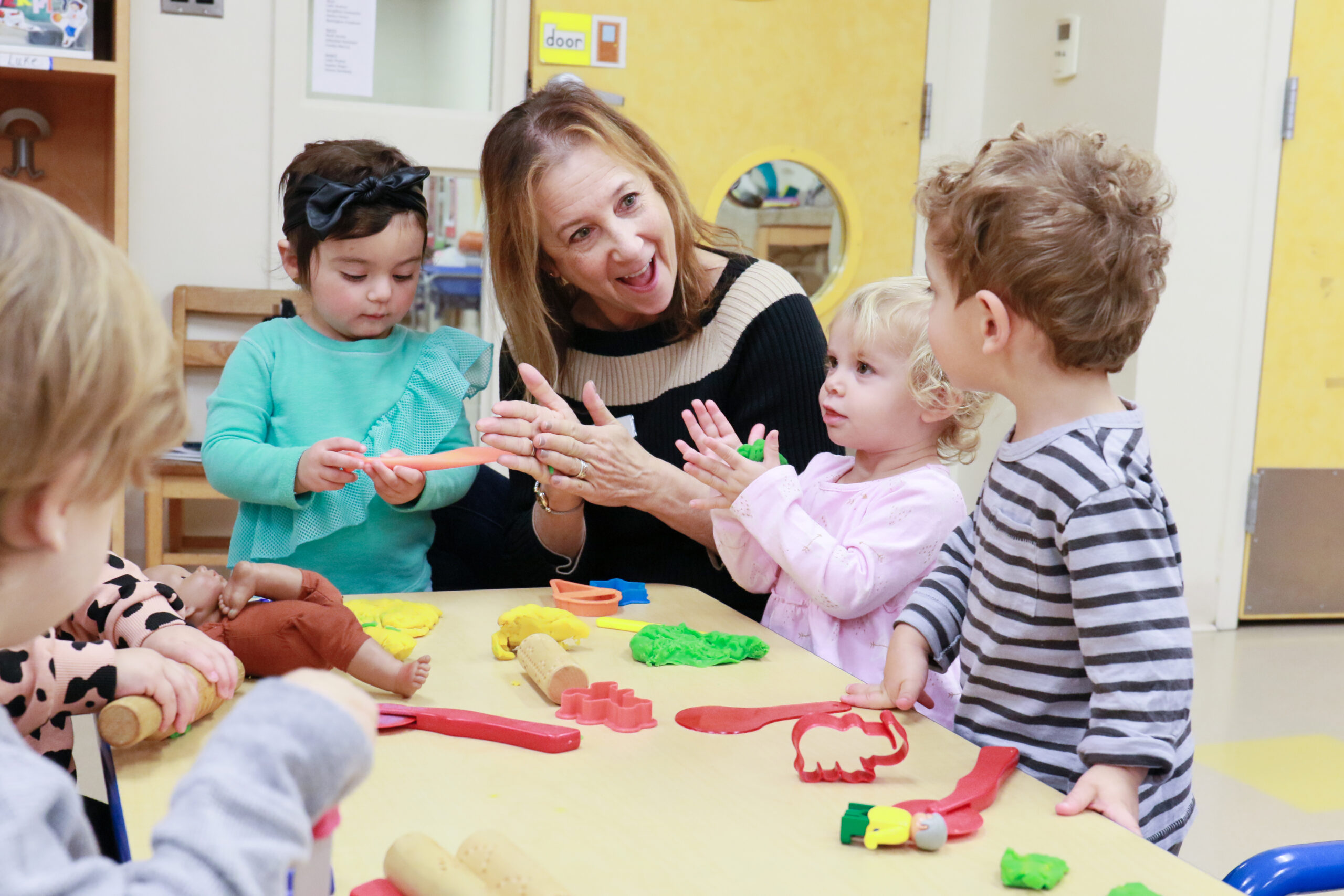Connection instead of Correction: The Importance of Staying Positive

I believe that the teaching profession is one of the most rewarding. Educators get to watch children speak their first words, take their first steps, ask a friend to play for the first time, pick up a crayon and proudly write their name, take risks, and succeed.
There are challenges as well.
We watch children struggle to accomplish something, get physical with one another when they can’t agree, feel disappointed, navigate weighty emotions tearfully… all while we balance schedules, safety, allergies, report writing, team dynamics, parent connections, and a whole lot more.
I face many of the same challenges in my primary profession, parenthood.
So how can parents and educators navigate through the challenges in a way that allows them to recognize and enjoy the rewards? When children’s behaviors provoke, annoy and irritate, it’s instinctual to respond with frustration and negative language. However, connection and deliberate language are effective tools for keeping these responses in check. In my experience, responsiveness is directly tied to the connections I’ve made with a child. A child is much more likely to consider feedback if he trusts the source and feels heard, known and understood. When we use negative language and criticism as feedback, we break their trust and further isolate them from us and their ability to complete their tasks successfully. Without connection, our children and our classes are simply a group of kids we need to “manage.” No one ends the day feeling fulfilled.
When I was six years old, my teacher distributed a worksheet on which to practice the letter O. And practice I did. But I was six; with undeveloped pencil grip, penmanship and precision. My teacher handed back the assignment with a sad face drawn across the top, and a message: “Your ‘O’s are too square.”
Was there a valid message this teacher was trying to convey? Yes. But her method was damaging. She bruised the fragile ego of a child. If she had only connected before correcting, it would have gone a long way. She could have congratulated me on my hard work, on having finished the page, on doing my best. She could have found the one “O” that was the least square – and encouraged me to make the rest as round as I could, like that one…or even acknowledged that circles take some time to master. I would have learned that she respected me, that if I persisted, I could succeed, and perhaps most importantly, I would have been motivated to keep trying! But I remember it decades later. Because she made me feel small and humiliated instead of proud and capable. The negative yells while the positive whispers.
Psychologists have studied the impact of negative language on young children. Studies have shown that on average, young children hear “NO” a staggering 400 times a day. Words such as NO, DON’T, CAN’T, SHOULDN’T discourage rather than empower. “Don’t run” rebukes a child and tells them what NOT to do. Their brains lack the maturity to figure out what to do when they’ve only been told what not to do. “Please walk” is direct. It lets them know what to do and does not embarrass or shame them.
When your child is throwing a ball in the kitchen, though it seems intuitive to say: “No throwing balls in the kitchen,” she can be redirected and given a choice, such as “You can throw the ball downstairs in the playroom or outside.” This gives the child independence and control.
Even as adults, we can feel the difference when we are being redirected by someone who connects with us. Here’s an example: “Welcome to the show. Please enter through the other door so we can avoid a fire hazard.” Contrast this with a rebuke such as, “You can’t come in this way. Don’t you see the DO NOT ENTER sign!?”
When a class walks down the hallway, past an attractive, 3-D winter bulletin board, with their hands gliding over the artwork, the teacher might impulsively say, “Don’t touch.” Instead, in the interest of connecting, staying positive, and teaching empathy, why not say: “Wow. Look at those winter collages! Let’s use our eyes only. The children worked hard on them!” This validates their attraction to the project and their “need” to touch it, while still establishing limits.
Both parenting and teaching are extraordinarily difficult. Having the presence of mind to think constructively while milk is spilling and chairs are tipping and bodies are teetering can seem impossible. It takes time and practice to retrain our brains to think and respond this way. When we do, the rewards for us and our children are innumerable. So let’s make our interactions encouraging and empowering. It’s a simple but very significant step we can take that will keep our children from shutting down or squelching their natural curiosity. When we are motivated to connect instead of correct, we create a positive environment in which children can trust, grow and blossom.

Written by Aliza Cinamon, the Three and Four Year Old Program Supervisor in the Leonard and Syril Rubin Early Childhood Center. Aliza oversees programs and works on special events within the Early Childhood Center. She earned a Bachelor’s Degree in Early Childhood Education from Yeshiva University and a Master’s Degree in Early Childhood Education from Bank Street College.


